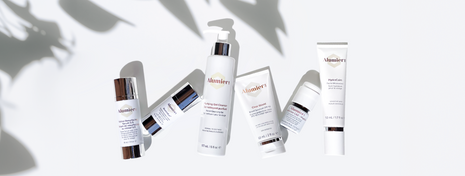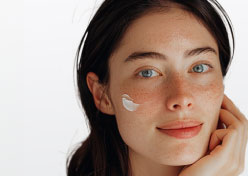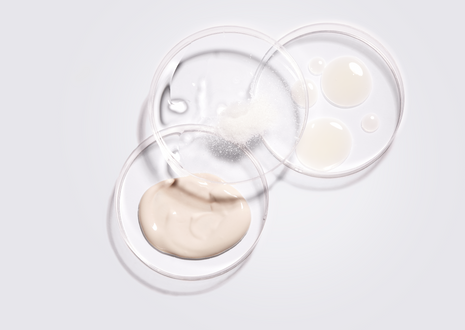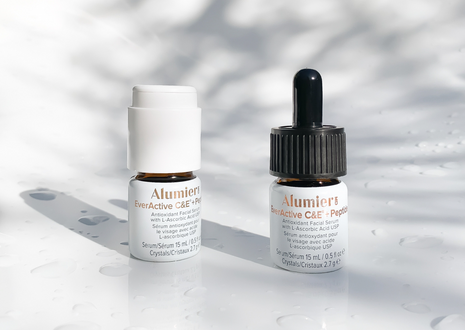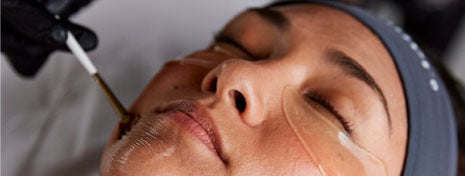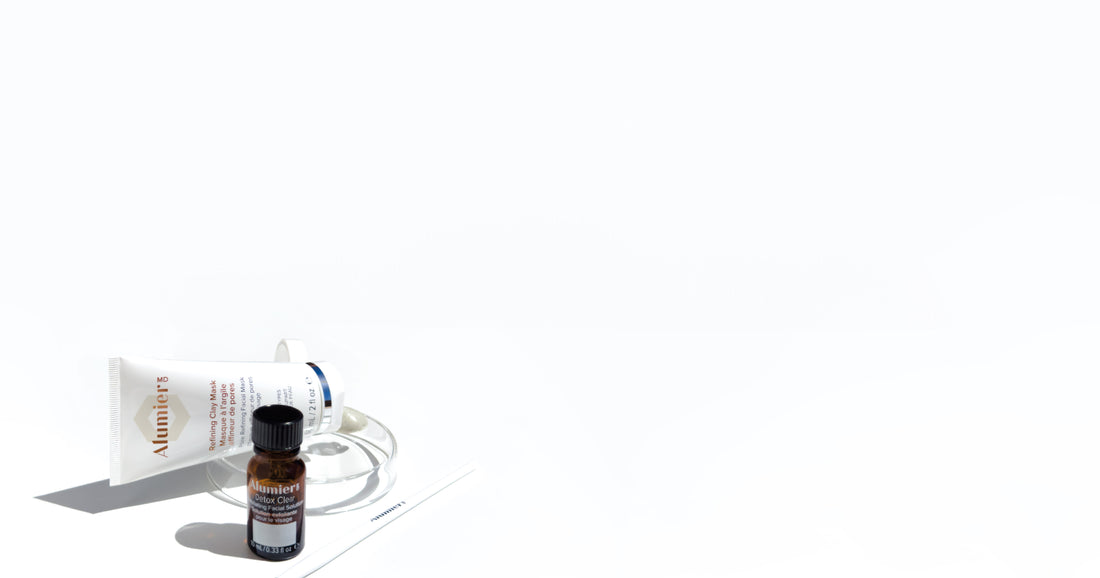
Chemical and Enzymatic Exfoliation – What’s the Big Deal Anyway?
Share
“Exfoliation” – no big deal, right? Most of us are familiar with the process of buffing or scrubbing away dead skin to make way for younger, healthier skin cells. No scare factor involved; we’ve all been doing it for decades. But what if we said, “CHEMICAL exfoliation” or “ACIDIC exfoliation”? Is it a different story? Is a small voice telling you to run for your life? We get it, ‘chemical’ and ‘acidic’ don’t automatically sound natural, safe, or friendly.
We’ve got interesting news though, turns out the skin barrier is naturally acidic, and that acidic environment is naturally removing dead cells from the body every day. What if we told you that your skin LIKES acidic exfoliation formulas because they speed up this natural chemical process for a more youthful complexion and enhanced skin health?
Still not sure? Think about how your skin feels after using a no-frills, run-of-the-mill, good old-fashioned soap. You’re probably recalling symptoms like dryness, itchiness, irritation, and if you’ve ever washed your face with soap you’ll know that within a couple of hours, you’re oily. Why? Soap is alkaline (the opposite of acidic), and the skin just doesn’t like it, that’s why.
OK, so now we’re on the same page – an acidic environment is good for the skin, and chemical exfoliation is a natural process. So, let’s take a deep dive into how chemical and enzymatic exfoliation skincare can actually be kinder to your skin than some scrubs by keeping your skin turnover moving along nicely, while respecting the skin barrier and restoring your skin’s natural radiance.
Chemical Exfoliants
Mechanically exfoliating, such as scrubbing, buffing and shaving, works to physically remove dead cells from the skin. Chemical exfoliants like alpha hydroxy acids (AHAs like lactic acid) and beta hydroxy acids (BHAs like salicylic acid) use their acidic pH to gently dissolve the Velcro-like bonds that keep dead cells attached to the skin. This non-abrasive process mimics the natural process of exfoliation, meaning it can be barrier-friendly and gentler than some scrubs.
AHAs, like lactic acid, love water so they work superficially to exfoliate and hydrate. By dissolving those bonds on the surface of the skin, they can smooth, unclog pores, and reduce the appearance of both fine lines and uneven skin tone. At-home AHA concentrations will range from 3%, like in Bright & Clear Solution, which is formulated for twice-daily use, sometimes 8%, like in AHA Renewal Serum, which is designed for nightly use, and up to 10% like in Enzymatic Peel, which is best for use 1 – 3 nights per week. Your AlumierMD pro will help you find the right formula and frequency of use for your skin. Professional chemical peels performed by your AlumierMD pro would be more like 20% or 30% lactic acid.
Shopping tip: Not all AHAs are as potent as lactic acid. If you see a high AHA percentage homecare formula (for example 30% AHA) it’s likely a blend of milder AHA. There’s a whole family of them including glycolic from sugarcane, citric from citrus fruits, and mandelic from almonds.
BHAs, like salicylic acid, love oil, so they are drawn towards hair follicles (aka pores), where the oil glands live. Congested jawline? Your hair follicles are trying to lubricate a beard that’s not there and the excess oil is causing breakouts. BHAs can deep clean pores reducing the appearance of blackheads and breakouts while refining skin texture and addressing shine. BHAs are found in low percentages such as 0.5% in Bright & Clear Solution, for daily action against the appearance of pores, and higher percentages, such as 2% (the upper limit for homecare products) in Acne Clarifying Cleanser and Acne Clarifying Serum for hard-hitting action against stubborn breakouts.
Enzymatic Exfoliants
If mechanical exfoliation is like the grit that buffs the skin, chemical exfoliation is the polish that makes it pop! If you speak to Your AlumierMD Pro about enzymes, we will bet you that they would whip out the Pac-Man analogy – a pro skincare community favorite. Enzymes, commonly from fruit extracts such as pineapple and papaya, go on the skin like little Pac-Man munching up pollution, cellular debris, and all sorts of surface ‘dust.’ The result is smooth, glowing and radiant skin. That’s why enzyme facials are often referred to as ‘red carpet’ treatments.
In-clinic enzyme treatments, like Enzyme Retexturing Treatment, are often used by our pro community as a precursor to chemical peels. The enzymes work to clear the surface of the skin, enhancing the penetration and efficacy of the chemical peel. To use enzymes at home, you could try Enzymatic Peel which combines pineapple and papaya enzymes with AHAs and BHAs for dramatic results. If you want to combine enzymatic exfoliation with oil control, try Refining Clay Mask which uses enzymes and two types of clay to refine skin texture and reduce shine.
To wrap up
Any type of exfoliation will help kick-start your rejuvenation results from the likes of IPL, laser resurfacing and chemical peels because you’re not starting from scratch when you arrive at the clinic. It’s also an essential part of maintaining good skin health and protecting your skin’s integrity long term. Hopefully reading this blog you’ve had an AHA moment (sorry, we couldn’t resist), and you’re now ready to take your exfoliation and at-home results to the next level. Our community of skincare pros are on hand to help you every step of the way. They can offer customized guidance on what chemical/enzymatic exfoliant you should use, how much, when to apply it as well as how to layer it for the results you want for YOUR SKIN.
Find a pro here.
